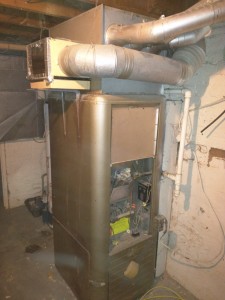The Ultimate Overview to Heating System Installment for a Cozy Home
Heating system installation is a critical facet of maintaining a comfy home atmosphere, particularly throughout the chillier months. As you consider these variables, the concern remains: what steps can you take to guarantee your heating system serves you well for years to come?
Sorts Of Furnaces

Gas heating systems are one of the most usual choice due to their effectiveness and lower functional prices. They use gas or propane, providing quick heating and constant efficiency, making them suitable for cooler environments.
Electric heaters, while generally easier to install and maintain, have a tendency to have higher operational costs. They are typically preferred in areas where gas service is unavailable or for homes with existing electric infrastructure.
Oil heaters, though much less usual today, continue to be a feasible alternative in specific areas. They shed heating oil, which can be beneficial during colder months, yet their dependence on oil delivery poses potential challenges.
In addition, there are high-efficiency versions available across these kinds, which can significantly decrease power usage and utility bills - furnace installation. Ultimately, recognizing these heater types will aid home owners select a system that lines up with their heating requires, budget plan, and energy choices
Picking the Right Dimension
Choosing the appropriate dimension for a heating system is vital to guaranteeing optimal efficiency and energy effectiveness. An undersized furnace will certainly struggle to keep comfortable temperatures throughout the cold months, resulting in boosted deterioration, higher power bills, and possible system failure. Alternatively, a large furnace may cycle on and off also often, resulting in ineffective home heating and unequal temperature level distribution within the home.
To determine the appropriate furnace dimension, an estimation called the Guidebook J tons estimation ought to be executed. This procedure assesses numerous factors, consisting of the square video of the home, insulation levels, home window dimensions, and local climate problems. This extensive evaluation guarantees that the heating system fulfills the particular home heating needs of the space.

Setup Process Overview
In terms of materials, you will need ductwork, insulation, and securing tape to guarantee optimal air movement and power performance - furnace installation. It is likewise essential to have a brand-new heating system filter available, in addition to venting materials, such as PVC pipeline or metal flue, relying on the kind of heating system being installed
Safety and security devices, consisting of gloves, safety glasses, and a face mask, is likewise crucial to shield against dust and particles throughout setup. Having all these tools and products readily offered not just simplifies the process yet also boosts the safety and efficiency of the heater installment.
Maintenance Tips for Longevity
To make certain the durability of your heater, it is important to apply a routine upkeep schedule that deals with vital components of the system. Start by changing or cleansing the air filter every one to three months, as a clogged up filter can restrict air flow and reduce performance. Additionally, check and clean up the blower assembly to stop dirt accumulation that can impede efficiency.
Following, examine the thermostat settings and recalibrate if essential to make certain precise temperature level regulation. Examine the ductwork for leaks or obstructions, as this can bring about power loss and irregular heating. On a regular basis oil the electric motor and bearings according to the manufacturer's recommendations to reduce deterioration.
Expert examinations need to take place every year, where a certified professional can analyze check my source the furnace's overall condition, look for gas leakages, and make certain that safety and security attributes are operating correctly. Think about mounting a programmable thermostat to enhance energy usage and maintain regular home temperature levels. By embracing these maintenance practices, you can enhance your furnace's effectiveness, prolong its life expectancy, and inevitably enjoy a go now cozy and comfy home atmosphere.
Conclusion
